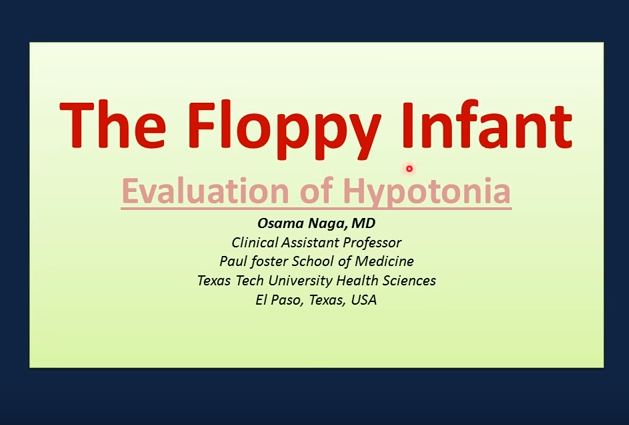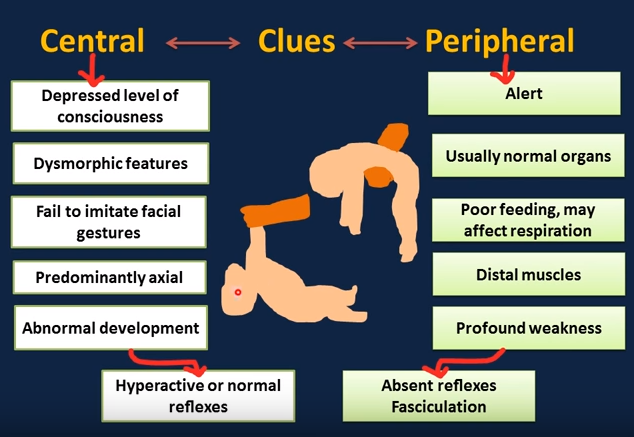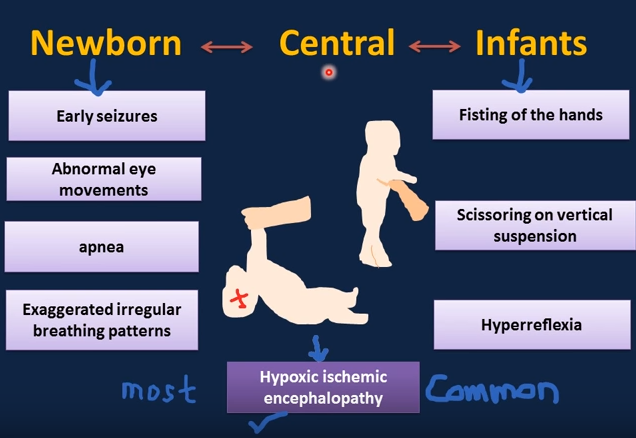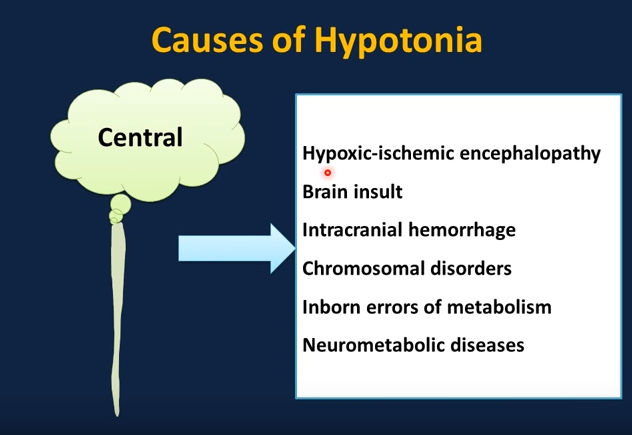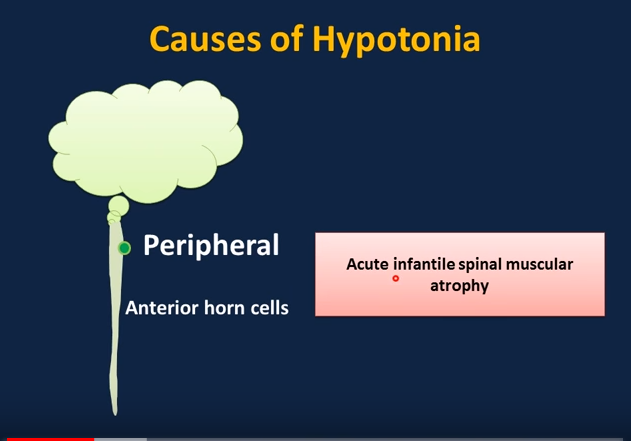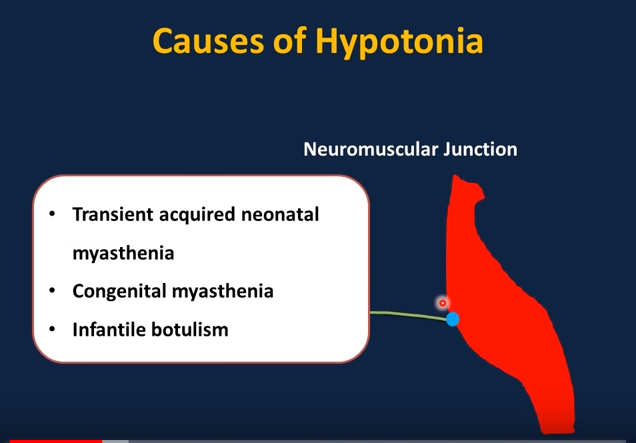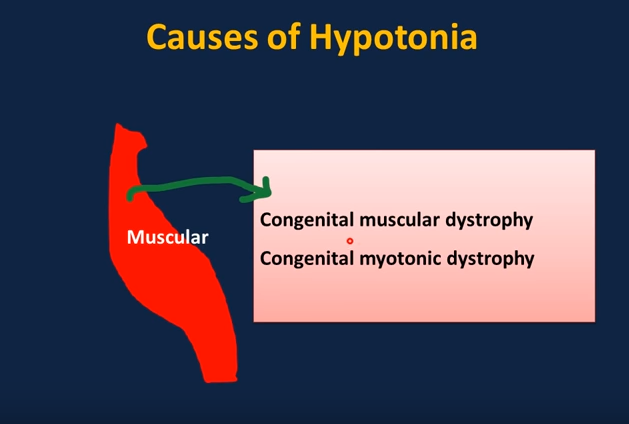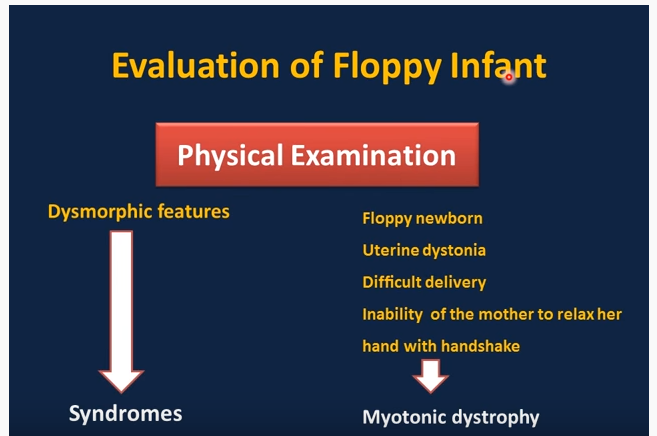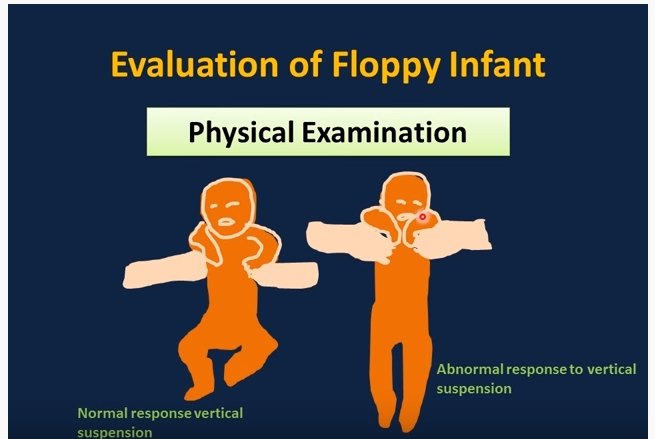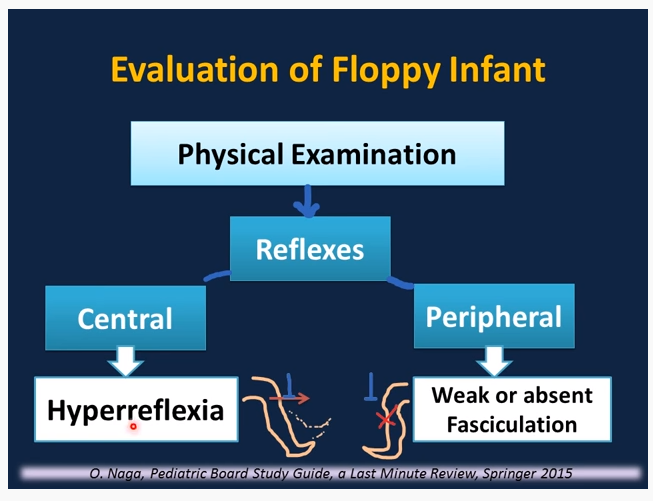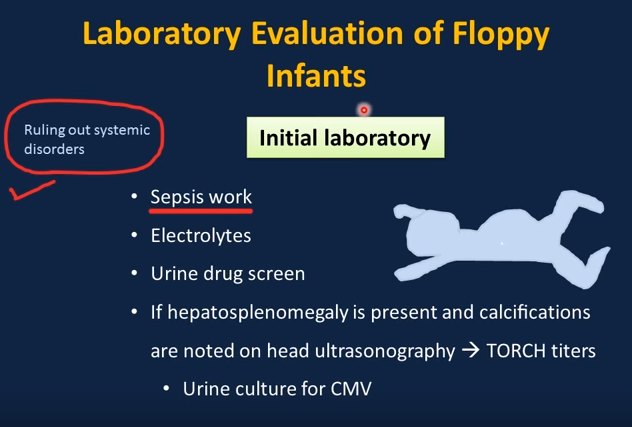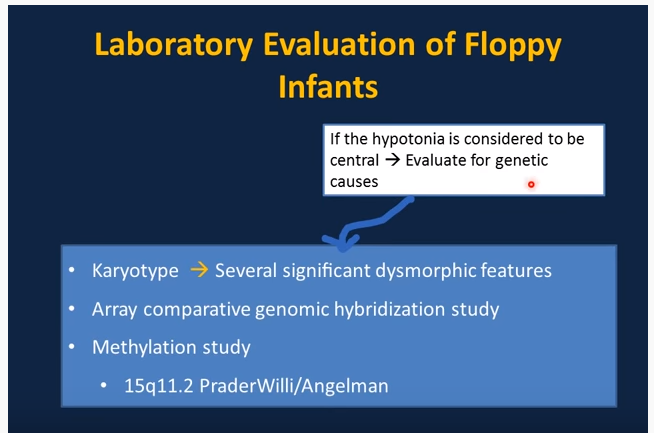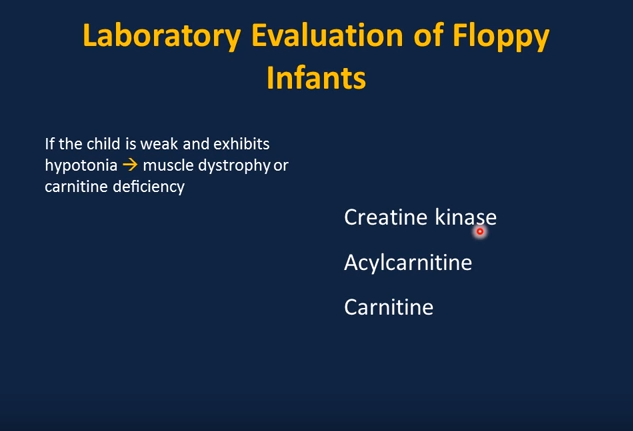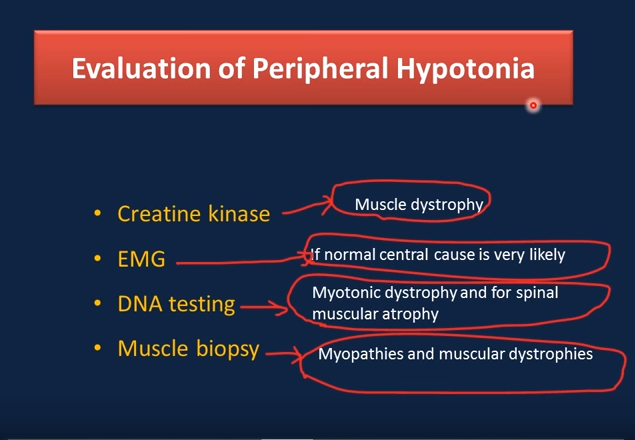This video is an outstanding review. I strongly recommend it.
The Floppy Infant: Hypotonia, Mar 5, 2017. 24:14
Here are the slides from the video:
text
Text
Text
Text
Text
Text
Remember that fasciculations is a common association with this illness.*
*Teaching Video NeuroImages: Tongue fasciculations in spinal muscular atrophy, YouTube video from Neurology Journal. 0.12
*Spinal Muscular Atrophy from the UCSF Benioff Children’s Hospital:
Spinal muscular atrophy (SMA) is a group of genetic diseases that affects the part of the nervous system that controls voluntary muscle movements, such as crawling, walking, head and neck control, and swallowing. The disease causes weakness and wasting of the voluntary muscles.
SMA affects infants, children and adults. The condition occurs at an estimated rate of 1 in every 6,000 births. Childhood SMA is an autosomal recessive disease, meaning it runs in families. Children inherit a gene from both their mother and father, although the parents may have no symptoms. An estimated 1 in 40 “normal” people are carriers of the SMA gene. If both a man and woman carry the gene, their child has a 25 percent chance of developing the condition.
Most nerve cells that control muscles, called motor neurons, are located in the spinal cord. Motor neurons send electrical and chemical messages to the muscles. In SMA, the motor neurons don’t send enough signals and the muscles don’t function properly and deteriorate.
*Spinal Muscular Atrophy – Signs and Symptoms from the UCSF Benioff Children’s Hospital:
Each child with spinal muscular atrophy (SMA) may experience symptoms differently. There are three main types of SMA, which are defined by their symptoms and the time symptoms first develop.
- Acute Infantile SMA (Type I)
- Also known as Werdnig-Hoffman disease, this form of SMA is the most severe. Some children develop the disease before birth. Mothers may notice that during the last three months of pregnancy, fetal movements are very weak. The majority of children with this form of the disease will experience symptoms before 8 months of age.
- The condition primarily affects the muscles that control chewing and swallowing, chest wall muscles, and arm and leg muscles. Symptoms are typically severe and may include hypotonia or diminished muscle tone, muscle weakness, respiratory problems, pneumonia, and swallowing and feeding difficulties.
- Chronic Infantile SMA (Type II)
- This form of SMA is less severe than acute infantile and usually progresses slowly. Symptoms normally develop between 6 to 18 months of age.
- Children with chronic infantile SMA may sit independently, but need support to walk or stand.
- Juvenile SMA (Type III)
- This form of SMA is also known as Kugelberg-Welander disease. Symptoms normally occur between 2 and 17 years of age. The severity of the condition varies, but generally progresses slowly. Some children may not walk or stand on their own, while others do.
Text
5:22
5:45-Even the newborn should have momentary head control and the infant should have total head control by 4 months. The patient may have a V-shaped lip. And they have a weak cry and poor suck.
Normally if you try to open the eyelid, the second attempt will be very difficult.
In cases of hypotonia, it will be very easy to open the eyelid with no resistance.
7:07
Text
7:40
Text
8:02
Text
8:40
Text
9:05
Text
9:50
Text
10:00
text
10:35
fig20 start here

